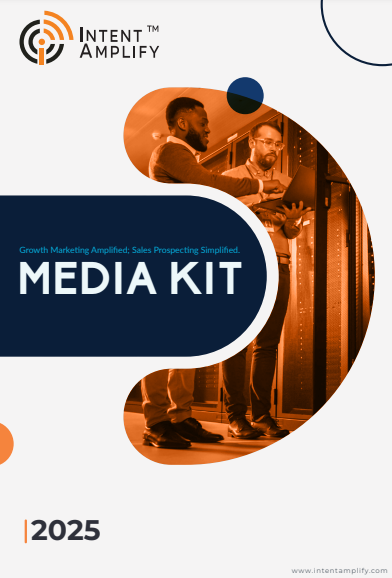
Interactive Formats That Drive Lead Gen: From Tools to Immersive Content in B2B
- Last updated on: October 20, 2025
The B2B marketers are under more and more pressure to successfully engage and Lead Gen. Whitepapers and blogs are examples of static content that are no longer a good option. Today’s consumers seek experiences that educate, involve, and impact choices. Solutions like tests, calculators, and deep experiences are examples of interactive forms that satisfy this need and also deliver quantifiable insights. With the help of these tools, marketers have the ability to improve their targeting on LinkedIn, obtain valuable data, and customize their campaigns. B2B marketers have the capability to speed up content marketing initiatives. Through the strategic deployment of interactive content. They can generate high-quality leads and improve the buyer’s journey. This renders interactive formats indispensable for contemporary campaigns.
Why Interactive Content Matters in B2B Lead Gen
Interactive content has a direct influence on lead gen by engaging buyers meaningfully. In contrast to static assets, it incites action, input, and discovery. When people interact with quizzes, calculators, or visualization guides, marketers obtain first-party data that indicates intent. Quality engagement enables lead priority for sales follow-up. As per a 2023 Demand Gen Report, interactive content has the ability to produce double the conversions of passive content. Sharing interactive experiences on LinkedIn further reaches and boosts visibility among target accounts. By tying engagement to quantitative insights, interactive formats enhance personalization and overall lead gen effectiveness in B2B marketing.
Types of Interactive Formats That Are Effective in Lead Gen
Assessment Tools and Quizzes
Assessment tools enable customers to gain insight into challenges when creating lead gen data. Quizzes enable users to respond to targeted questions and be given personalized feedback. Marketers can segment leads according to response and provide customized follow-ups. A technology adoption quiz, for instance, identifies process gaps and directs users to applicable solutions. It serves to position the brand as a trusted advisor while actively advancing goals.
ROI Calculators and Simulations
ROI calculators enable buyers to see potential savings or benefits. Simulations enable users to try out scenarios and see the effect. They provide genuine value and build credibility. A marketing automation return on investment calculator, for instance, can show how much time a team can save by utilizing your system. Using these technologies informs prospects about the value of the product and offers high-quality leads generation chances.
Interactive Infographics and Visual Guides
Sophisticated B2B marketing topics intimidate buyers. Interactive infographics enable users to learn at their own rate. Clickable images, overlaid charts, and guided steps enhance comprehension. This type of format retains users longer, boosting content marketing effectiveness. High-intent consumers can be identified thanks to the data collected from interactions, which also supports lead generation efforts.
Workshops, Live Demos, and Webinars
Live formats allow for lead generation and real-time interaction. Demos showcase features, webinars instruct, and workshops involve consumers in interactive activities. Metrics such as attendance, participation, and questions raised are produced by live sessions. Sales organizations can use this information to rank leads with the greatest intent. Live experiences establish trust and fortify the B2B buyer’s journey in tandem.
Immersive Content Experiences
AR, VR, and gamified content offer richer engagement for sophisticated solutions. A VR demo, for instance, lets IT leaders navigate a cybersecurity platform in a virtual setup. Gamified modules teach and amuse, retaining prospects for longer periods. Immersion experiences are very effective in generating and nurturing leads because they generate high-value engagement data.
How Interactive Content Supports the B2B Buyer’s Journey
Interactive content enriches all phases of the B2B buyer’s journey. The awareness stage, quizzes, calculators, and assessments draw attention while delivering value. At consideration, webinars, visual guides, and simulations inform prospects and establish trust. At the decision phase, immersive experiences and ROI calculators certify solutions and drive actionable lead gen opportunities.
Blending these formats with AI solutions for B2B marketing makes results even more potent. AI predicts lead quality, analyzes engagement patterns, and makes customization easier. Marketing automation is driven by insights, which enable relevant and fast follow-up messages. Marketers may optimize campaign efficiency and get higher-quality leads by using interactive content that is in line with the B2B buyers’ journey.
Best Practices for Maximizing Lead Gen with Interactive Formats
1. Begin with clarity and relevance
All interactive tools must address an actual buyer issue. Make the format consistent with the pain points of the B2B audience. Tools without a purpose tend to fall flat. Opt for formats that provide actionable information and substantial value.
2. Make content brief and mobile-savvy
Besides, B2B buyers use multiple devices to communicate, which may be a smartphone or a tablet. The device that is used for interaction needs to be user-friendly i.e., it should be easy to use, navigate, and load quickly. It is better to avoid long forms and complicated interactions. This results in decreasing the completion rate of the forms.
3. Incorporate with CRM and marketing automation
Connect interactive instruments with CRM systems for a natural way of collecting first-hand data. Through automation workflows, you are able to segment leads in a more efficient way, start follow-ups, and develop prospects. This provides high-quality lead gen without manual effort.
4. Keep engagement metrics in close watch
Monitor completion rates, time on site, and user behavior to assess impact. Review which tools are driving the most significant engagement. Apply this information to streamline your approach and target top-performing formats for optimal lead gen effect.
5. Regularly test and optimize formats
To find out what works for your audience, experiment with different interactive content formats. Compare immersive content, webinars, calculators, and quizzes. Continually repeat flows, messaging, and design according to real engagement measurements.
6. Don’t over-engineer tools
Complicated structures frustrate people and minimize participation. Make interactions simple and centered around providing insights. The objective is to teach and generate leads, not overwhelm prospects with extraneous features.
7. Foster sharing and amplification
Plan interactive experiences with social sharing in mind. LinkedIn, email campaigns, and groups can drive further reach. Active users sharing content increases visibility, leads new prospects, and creates further lead gen opportunities.
8. Update content frequently.
Update interactive tools with the latest data analysis, product releases, and market trends. Outdated content decreases engagement and loses popularity. For the target audience, regular updates maintain its relevance, interest, and credibility.
9. Enhance personalization and user experience
Make the experience simple and easy to use. Use engagement data to tailor suggestions and follow-ups. Personalized interactions increase conversions, foster trust, and produce better-quality leads.
10. Combine audience-focused design, simplicity, and strategy.
Every element of the interactive model needs to serve a certain function. The proper audience receives the right message thanks to strategic planning. User-centric experiences maximize the effectiveness of lead generation, while clean design removes friction.
Conclusion
In current marketing, no B2B lead generation can go without the use of interactive content. Buyers receive up-to-date information through quizzes, calculators, infographics, live demos, and immersive experiences. When these tools are linked with AI and marketing automation, they offer better targeting, measurable ROI, and personalized nurturing. Interactive content that increases trust and engagement can be implemented at any stage of the B2B buyer’s journey. Marketers, by employing these strategies, can propel content marketing. They can also yield a stream of quality leads and refine their campaigns for consistent outcomes. Lead generation is now data-driven, efficient, and adaptable to the ever-changing demands of buyers.
FAQs
- What interactive formats produce the best B2B lead generation?
The most effective tools are tests, calculators, visual aids, webinars, live demonstrations, and immersive experiences.
- How do interactive tools provide high-quality leads?
They signify intent-driven prospects by capturing engagement metrics and first-party data.
- Can AI tools help with lead generation through interactive content?
Yes, AI predicts the quality of leads, tailors follow-up, and gauges engagement.
- How does interactive material enhance LinkedIn campaigns?
It produces targeted traffic for lead generation, expands reach, and encourages sharing.
- Are immersive experiences appropriate across all B2B industries?
They perform best with complex solutions, but can be applied creatively across industries.



